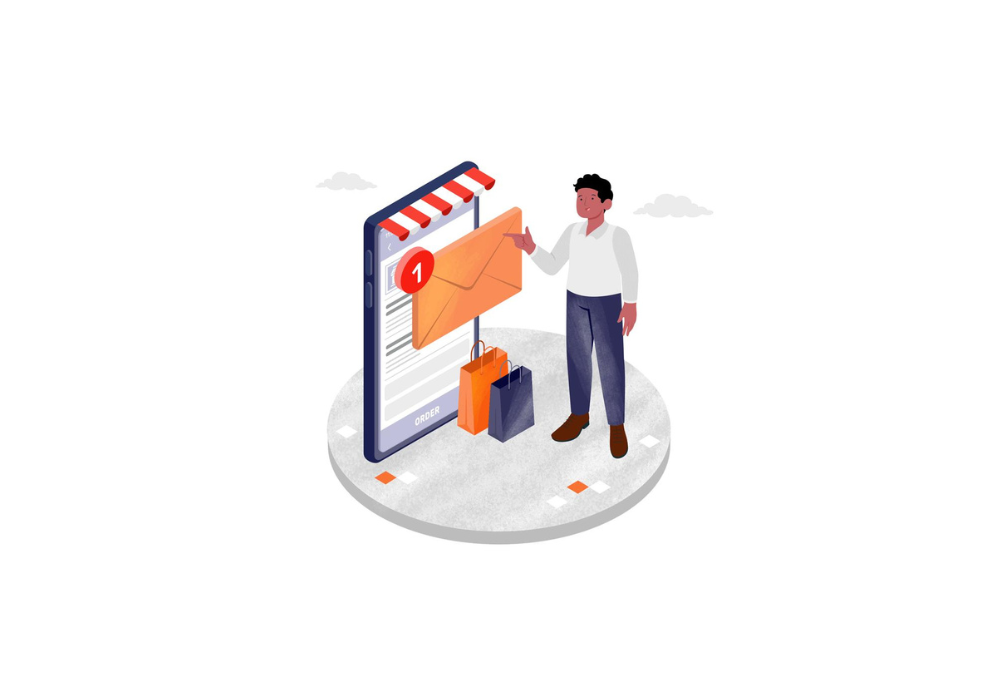- January 11, 2024
- Web Marketing
- 0 Comments
Email marketing, though an age-old strategy, remains an unmatched channel for businesses seeking cost-effective and impactful outreach. Establishing communication with customers who willingly opt-in allows you to keep them informed about your products, services, and special promotions. The beauty of email marketing lies in its simplicity, accessibility, and, most importantly, its affordability!
Unraveling the Essence of Email Marketing
Why Email Marketing Matters
Emails effortlessly drive sales with minimal effort, significantly influencing potential customers’ decisions. In a landscape where businesses deploy various strategies, email marketing stands tall as one of the most widely used methods. It facilitates automated interactions with customers, fostering customer acquisition and retention. Maintaining periodic contact ensures that your subscribers remember your presence, making email a potent tool for customer engagement and lead generation.
Concerned about being too intrusive? Worry not! When your emails provide relevant information and value, they steer clear of the dreaded spam category. Regularly updating subscribers with pertinent content establishes your credibility and keeps them engaged, making them appreciate the value of being a subscriber. However, striking a balance in email frequency is vital; quality should prevail over quantity.
Key Considerations Before Embarking
Customer-Centric Approach
Put yourself in your customer’s shoes. Envision their journey with your company, identifying potential interaction points. Proactively offer assistance where they might need it, anticipating their needs before they reach out. Pre-emptive interaction is more effective than reacting to existing problems. Remember, the initial contact sets the tone, making it crucial to precisely communicate your message. Create and test your emails, ensuring they are display-friendly across devices, especially on mobiles and tablets.
Five Essential Emails to Send
Welcome Emails:
Communicate your product or service’s purpose and functionality.
Express gratitude for choosing your brand.
Trigger Emails or Transactional Emails:
Personalized messages triggered by specific customer actions.
For example, confirm successful purchases and suggest related products.
Newsletters:
Focus on providing quality content rather than a sales pitch.
Ideal for sharing knowledge, entertainment, and increasing website traffic.
Reengaging Emails:
Win back subscribers who may have lapsed or unsubscribed.
Use messages like “we miss you” or gather feedback through polls.
Emails After Issues:
Apologize and offer solutions for any problems or inconveniences.
Reinforce trust by addressing issues promptly.
The Role of Email Marketing Tools
To efficiently handle a large volume of emails, consider using email marketing tools. These platforms, whether free or paid, offer features like sign-up form creation, automated emails, and A/B testing. Choose a tool that aligns with your needs, ensuring it integrates seamlessly with your Content Management System (CMS).
For instance, Shopify Email, embedded in Shopify’s eCommerce platform, facilitates sending up to 2500 emails per month for free. With user-friendly features and easy integration, it’s an excellent starting point for small to medium-sized businesses.
If you seek comprehensive guidance on online marketing, explore applications like rankingCoach for a centralized platform covering essential aspects of online marketing.
SMS Marketing: A Complementary Force in Your Digital Strategy
While SMS marketing may not be a new kid on the block, its role has evolved, making it an indispensable component of a multi-channel strategy. This article delves into the features, benefits, impact, and implementation of SMS marketing to optimize your digital communication strategy.
Understanding SMS Marketing
What is SMS Marketing?
SMS marketing involves sending offers, alerts, notifications, or invitations via text messages to prospects or customers who have given their consent. Two primary forms exist:
Promotional SMS: Boosts customer engagement through sales and flash sales.
Transactional SMS: Enhances sales and customer relationship management, providing order tracking and appointment reminders.
SMS messages, with an average of 160 characters, are read swiftly, contributing to their effectiveness. With an incredibly low unsubscription rate of about 0.13%, SMS marketing is a powerful tool. However, adherence to regulations is crucial, avoiding SMS marketing on Sundays, public holidays, and between 8 pm and 8 am on weekdays.
Benefits of SMS Marketing
With over 8 billion mobile connections globally, SMS boasts high engagement, enabling direct and rapid communication. Approximately 90% of SMS messages are read within 3 minutes, attributed to the omnipresence of smartphones in users’ daily lives. SMS offers an uncomplicated means to convey short, readable messages, and its setup is user-friendly. Given its opening rate exceeding 95%, a well-crafted SMS with compelling content and a clear call-to-action can be exceptionally effective.
Integrating SMS Marketing into Your Strategy
Combine SMS marketing with email marketing for a comprehensive, automated communication approach. Leverage the strengths of each channel:
Send reminder SMS to email openers and clickers.
Alternate between email campaigns and SMS marketing.
Schedule immediate or deferred sendings, tailoring your communication strategy to different customer segments. Now, let’s explore the practical steps of creating an SMS marketing campaign using a reliable tool.
Crafting an SMS Marketing Campaign
Utilizing tools like Mailify, the process mirrors that of an email campaign: importing contacts, recipient selection, message creation, testing, and sending. Personalization fields enhance SMS content, allowing dynamic customization. Importantly, no technical expertise is required, and messages can be delivered to hundreds or thousands of recipients within minutes.
Campaigns can be promotional or transactional, depending on your objectives. Choose contacts from lists, use behavioral targeting, or import files to define your campaign’s audience. Write your SMS content, test it, and your campaign is ready for launch.
Conclusion
In conclusion, SMS marketing, while standing the test of time, now offers unparalleled communication guarantees. Its high reception, opening, and reading rates, combined with the prevalence of mobile devices, make it an essential tool. When integrated with email marketing, this multi-channel approach ensures effective prospecting and customer loyalty. By embracing both channels, your company can navigate the evolving digital landscape with a robust and relevant communication strategy.



